
The Hidden Gem: Little River Canyon National Preserve
Discover the Natural Beauty of Little River Canyon National Preserve in Alabama, a Haven for Outdoor Adventures and Scenic Views.
Nestled in the northeastern corner of Alabama, Little River Canyon National Preserve is a natural wonder that offers stunning landscapes and outdoor adventures. The preserve is home to one of the nation's longest mountaintop rivers, the Little River, which has carved out a canyon providing breathtaking views and a serene escape from the hustle and bustle of everyday life. Visitors can explore over 15,000 acres of preserved land, where they will find an array of activities such as hiking, rock climbing, and kayaking. The park's diverse ecosystems support a variety of wildlife, making it a paradise for bird watchers and nature enthusiasts. The Little River Falls is one of the most visited spots in the preserve, where the river plunges into a scenic gorge, creating an ideal spot for photography and relaxation. The preserve's scenic drive, the Little River Canyon Rim Parkway, offers numerous overlooks and picnic areas. It's an excellent way to take in the panoramic views of the canyon without the need for strenuous hiking. The beauty of each season is captured in the preserve, from vibrant fall foliage to lush spring blooms, making it a year-round destination for nature lovers.
Local tips in Little River Canyon National Preserve
- Best visited in fall for stunning foliage and mild weather.
- Check the water levels before planning a kayaking trip.
- Wear sturdy shoes for hiking; trails can be rocky and uneven.
- Bring binoculars for bird watching and spotting wildlife.
- Pack a picnic; there are many scenic spots ideal for a meal.
The Hidden Gem: Little River Canyon National Preserve
Nestled in the northeastern corner of Alabama, Little River Canyon National Preserve is a natural wonder that offers stunning landscapes and outdoor adventures. The preserve is home to one of the nation's longest mountaintop rivers, the Little River, which has carved out a canyon providing breathtaking views and a serene escape from the hustle and bustle of everyday life. Visitors can explore over 15,000 acres of preserved land, where they will find an array of activities such as hiking, rock climbing, and kayaking. The park's diverse ecosystems support a variety of wildlife, making it a paradise for bird watchers and nature enthusiasts. The Little River Falls is one of the most visited spots in the preserve, where the river plunges into a scenic gorge, creating an ideal spot for photography and relaxation. The preserve's scenic drive, the Little River Canyon Rim Parkway, offers numerous overlooks and picnic areas. It's an excellent way to take in the panoramic views of the canyon without the need for strenuous hiking. The beauty of each season is captured in the preserve, from vibrant fall foliage to lush spring blooms, making it a year-round destination for nature lovers.
When is the best time to go to Little River Canyon National Preserve?
Iconic landmarks you can’t miss
Little River Canyon Falls Park
Explore the breathtaking beauty of Little River Canyon Falls Park in Fort Payne, Alabama, where stunning waterfalls meet serene hiking trails.

Eberhart Point Overlook
Discover the breathtaking views at Eberhart Point Overlook, a serene escape in Alabama's Little River Canyon National Preserve.

Little Falls
Explore Little Falls in Fort Payne, Alabama, a breathtaking natural attraction with stunning waterfalls and serene hiking trails amidst nature.

Little River Falls Overlook
Explore the breathtaking Little River Falls Overlook, a historical landmark in Alabama's stunning Little River Canyon National Preserve, ideal for nature lovers and photographers.

Wolf Creek Overlook
Discover the stunning vistas and serene beauty of Wolf Creek Overlook, a must-visit scenic spot in Fort Payne, Alabama for nature lovers and photographers.

Little River Canyon Center
Explore the breathtaking landscapes and diverse trails at Little River Canyon Center, a top destination for nature lovers and hiking enthusiasts in Alabama.

Canyon View Overlook
Experience the stunning beauty of Alabama at Canyon View Overlook, a scenic spot perfect for nature lovers and photographers seeking breathtaking landscapes.

Lynn Overlook
Explore the serene beauty of Lynn Overlook, where breathtaking views of Little River Canyon await amidst Alabama's natural splendor.

Graces High Falls
Experience the breathtaking beauty of Graces High Falls in Alabama, a scenic gem of Little River Canyon National Preserve, perfect for nature lovers and adventurers.

Mushroom Rock
Discover the enchanting Mushroom Rock in Fort Payne, Alabama, a breathtaking natural attraction with unique geological formations and picturesque hiking trails.
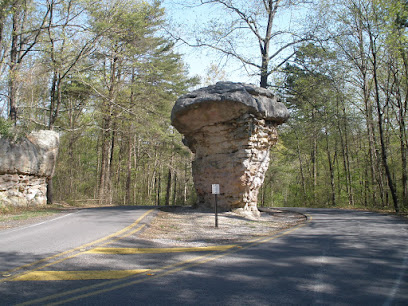
Congo Falls Park
Explore the enchanting waterfalls and lush landscapes of Congo Falls Park, a scenic retreat in Fort Payne, Alabama, perfect for nature lovers and adventurers.

Crow Point Overlook
Discover the spectacular vistas and serene beauty of Crow Point Overlook in Little River Canyon National Preserve, a must-see for nature lovers in Alabama.

Powell Trail - Little River Canyon
Discover the breathtaking Powell Trail at Little River Canyon, a must-visit hiking destination in Fort Payne, Alabama, perfect for nature lovers and adventure seekers.

Little River Canyon
Explore the breathtaking hiking trails and stunning landscapes of Little River Canyon in Fort Payne, Alabama - a true outdoor paradise.

Little River Canyon Kayak Put In
Discover the breathtaking beauty and adventure of Little River Canyon, a top destination for kayaking, hiking, and immersing yourself in nature's splendor.

Unmissable attractions to see
DeSoto State Park
Experience the breathtaking beauty and outdoor adventures at DeSoto State Park, Alabama's natural gem with trails, waterfalls, and wildlife.

Little River Canyon Falls Park
Experience the breathtaking beauty of Little River Canyon Falls Park, a natural oasis in Alabama with stunning waterfalls and scenic hiking trails.

Forum River Center
Discover the Forum River Center, a premier event venue in Rome, GA, offering a perfect blend of modern amenities and scenic beauty for unforgettable experiences.

Little Falls
Explore the natural beauty and tranquil vibes of Little Falls, a serene destination in Fort Payne, Alabama, perfect for outdoor adventures and relaxation.

Little River Falls Overlook
Explore the breathtaking views and rich history at Little River Falls Overlook in Alabama's stunning Little River Canyon National Preserve.

Canyon View Overlook
Discover the serene beauty of Canyon View Overlook, a must-visit scenic spot in Fort Payne, Alabama, showcasing stunning vistas of Little River Canyon.

Lynn Overlook
Discover the stunning views and natural beauty of Lynn Overlook, a premier scenic spot in Fort Payne, Alabama, perfect for all outdoor enthusiasts.

Indian Falls
Experience the breathtaking beauty of Indian Falls in Fort Payne, Alabama – a serene hiking area and tourist attraction perfect for nature lovers.

Fort Payne Cabin Historic Site
Explore the Fort Payne Cabin Historic Site in Alabama, a fascinating glimpse into early settler history amidst beautiful surroundings.

Little River Falls Observation Deck
Explore the stunning Little River Falls Observation Deck in Gaylesville, Alabama, a historical landmark offering breathtaking views and nature's tranquility.

Congo Falls Park
Explore the enchanting Congo Falls Park in Fort Payne, Alabama, a scenic haven for nature lovers and adventure seekers alike.

Powell Trail - Little River Canyon
Experience the breathtaking landscapes and tranquility of Powell Trail in Little River Canyon, Alabama, a haven for hikers and nature lovers.

Little River Canyon
Explore the breathtaking beauty of Little River Canyon, a premier hiking area in Alabama known for its stunning views, diverse wildlife, and serene waterfalls.

Little River Wildlife Preserve
Explore the stunning landscapes and diverse wildlife at Little River Wildlife Preserve in Fort Payne, Alabama, a serene escape for nature lovers.
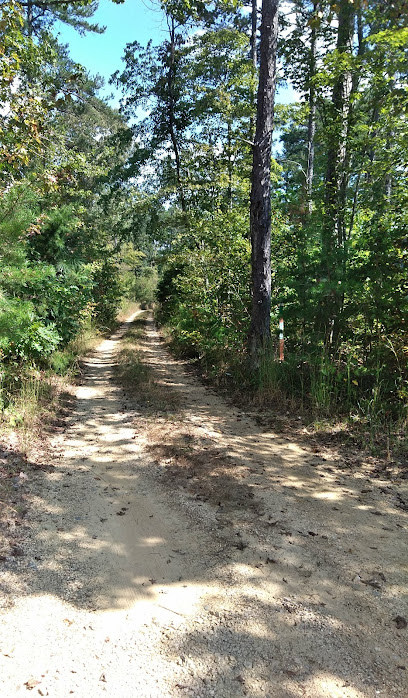
Greg's Two Falls
Explore the breathtaking beauty of Greg's Two Falls in Fort Payne, Alabama - a perfect hiking area for nature lovers and adventure seekers.

Essential places to dine
Cracker Barrel Old Country Store
Experience authentic Southern cuisine at Cracker Barrel Old Country Store in Fort Payne - where nostalgia meets delicious comfort food.

Santa Fe Cattle Company
Savor delicious steaks and barbecue at Santa Fe Cattle Company - where Southern hospitality meets flavorful dining in Fort Payne.

Jefferson's
Experience mouthwatering chicken wings and juicy burgers at Jefferson's in Fort Payne—where American flavors come alive!

Arby's
Experience delicious fast food delights at Arby's in Fort Payne, where quick bites meet satisfying flavors.

Krystal
Experience the best of fast food at Krystal in Fort Payne—delicious burgers, chicken wings, and breakfast delights await you.

Jack's
Experience authentic Southern fast food at Jack's in Fort Payne—where delicious breakfasts meet hearty hamburgers in a welcoming atmosphere.

Wingstop
Savor deliciously crafted chicken wings at Wingstop in Fort Payne - a paradise for wing lovers with unique flavors and casual vibes.

Barone's Pizza and Arcade
Discover delicious pizzas and endless fun at Barone's Pizza and Arcade in Fort Payne, AL - where family dining meets gaming excitement!

Little Caesars Pizza
Discover deliciously affordable pizza at Little Caesars Pizza in Fort Payne - perfect for travelers craving fast food delights.

Pizza Hut
Enjoy delicious pizza and chicken wings at Pizza Hut in Fort Payne - the perfect spot for families seeking tasty American comfort food.

Rim of the Canyon Cafe & Grocery
Discover delicious meals and convenient shopping at Rim of the Canyon Cafe & Grocery, your perfect stop in Fort Payne, Alabama.

Markets, malls and hidden boutiques
Little River Canyon National Preserve
Explore the breathtaking landscapes and diverse wildlife of Little River Canyon National Preserve, a hidden gem in Alabama's natural beauty.
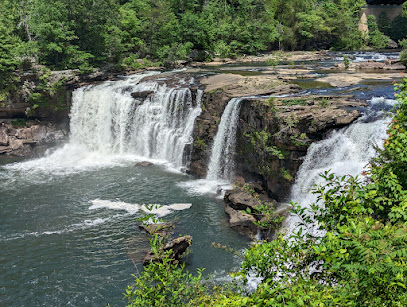
Little River Canyon Falls Park
Explore Little River Canyon Falls Park in Alabama, a natural paradise filled with breathtaking waterfalls, diverse wildlife, and scenic hiking trails.

Little River Canyon Center
Explore the majestic Little River Canyon Center, where breathtaking landscapes, diverse wildlife, and exhilarating hiking trails await in Alabama's natural wonder.

Rim of the Canyon Cafe & Grocery
Discover local flavors and convenience at Rim of the Canyon Cafe & Grocery in Fort Payne, Alabama – a perfect stop for travelers and food lovers alike.

Powell Trail - Little River Canyon
Explore the breathtaking Powell Trail at Little River Canyon, a must-visit hiking destination in Alabama, offering stunning views and serene nature.
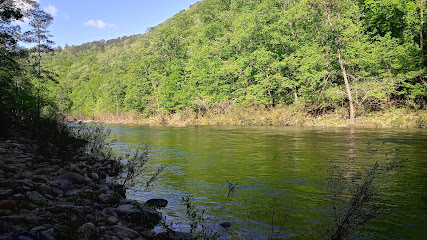
Essential bars & hidden hideouts
Cracker Barrel Old Country Store
Discover the heart of Southern dining at Cracker Barrel Old Country Store, a perfect blend of traditional cuisine and charming gift shop.

Santa Fe Cattle Company
Delight in the rich flavors of steak and barbecue at Santa Fe Cattle Company, a family-friendly dining haven in Fort Payne, Alabama.
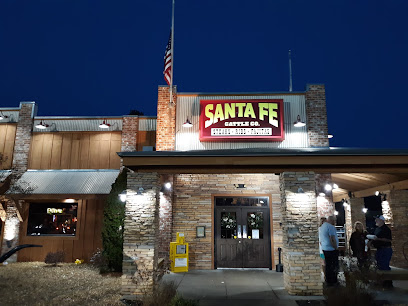
Little River Canyon National Preserve
Explore Little River Canyon National Preserve, a breathtaking natural wonder in Alabama, perfect for outdoor adventures and serene retreats.

Little River Canyon Falls Park
Explore Little River Canyon Falls Park, a stunning natural haven in Alabama featuring breathtaking waterfalls, scenic trails, and rich biodiversity.

Applebee's Grill + Bar
Experience classic American dining at Applebee's Grill + Bar in Fort Payne, where comfort food and a warm atmosphere await you.
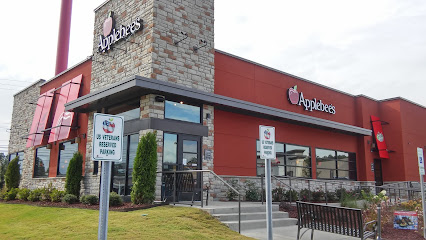
Jefferson's
Experience the best American cuisine at Jefferson's in Fort Payne, AL – famous for their delicious chicken wings and burgers.

Wingstop
Savor the best chicken wings in Fort Payne, Alabama at Wingstop, where flavor meets fun and every bite is a culinary delight.

Little River Canyon Center
Discover the breathtaking landscapes and rich biodiversity of Little River Canyon Center, the perfect destination for hiking and nature exploration in Alabama.

Rim of the Canyon Cafe & Grocery
Experience delicious meals and local charm at Rim of the Canyon Cafe & Grocery, your ideal stop near Little River Canyon's breathtaking beauty.
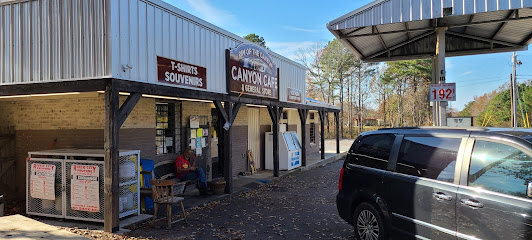
Lynn Overlook
Discover the serene beauty of Lynn Overlook, a scenic gem offering stunning views of Little River Canyon in Fort Payne, Alabama.

Crow Point Overlook
Experience the stunning landscapes of Crow Point Overlook in Little River Canyon National Preserve, a perfect escape for nature lovers and photographers alike.

Local Phrases about Little River Canyon National Preserve
-
- HelloHowdy
[haw-dee] - GoodbyeSee ya
[see yuh] - YesYep
[yep] - NoNah
[nah] - Please/You're welcomePlease
[pleez] - Thank youThank ya
[thank yuh] - Excuse me/SorryPardon
[par-dun] - How are you?How y'all doin'?
[hao y'all doin'] - Fine. And you?Fine. And y'all?
[fain. and y'all?] - Do you speak English?Ya speak English?
[yah speak ing-glish?] - I don't understandI ain't catchin' on
[ah aint catchin' on]
- HelloHowdy
-
- I'd like to see the menu, pleaseLet me see that menu, please
[let me see that menu, please] - I don't eat meatI don't eat no meat
[ah dont eat no meat] - Cheers!Cheers!
[cheers!] - I would like to pay, pleaseLet me settle up, please
[let me settle up, please]
- I'd like to see the menu, pleaseLet me see that menu, please
-
- Help!Help!
[help!] - Go away!Git!
[git!] - Call the Police!Call the Sheriff!
[call the shur-iff] - Call a doctor!Call the doc!
[call the doc!] - I'm lostI done got turned around
[ah dun got turned around] - I'm illI'm feelin' poorly
[ahm feelin' poor-lee]
- Help!Help!
-
- I'd like to buy...I'm fixin' to buy...
[ahm fixin' tuh buy] - I'm just lookingI'm jest lookin'
[ahm jest lookin'] - How much is it?How much fer it?
[hao much fur it] - That's too expensiveThat's too highfalutin'
[thats too high-fah-loo-tin] - Can you lower the price?Can ya bring it down some?
[can yuh bring it down some]
- I'd like to buy...I'm fixin' to buy...
-
- What time is it?What o'clock is it?
[what o-clock is it] - It's one o'clockIt's one o'clock
[its one o-clock] - Half past (10)Half past ten
[half past ten] - MorningMornin'
[mornin'] - AfternoonAfternoon
[afternoon] - EveningEvenin'
[evenin'] - YesterdayYestiddy
[yes-tid-dee] - TodayToday
[today] - TomorrowTomorra
[tom-or-rah] - 1One
[wun] - 2Two
[too] - 3Three
[three] - 4Four
[four] - 5Five
[five] - 6Six
[six] - 7Seven
[seven] - 8Eight
[eight] - 9Nine
[nine] - 10Ten
[ten]
- What time is it?What o'clock is it?
-
- Where's a/the...?Where's the... at?
[wheres the at] - What's the address?What's y'all's address?
[whats y'alls address] - Can you show me (on the map)?Can ya point it out (on the map)?
[can yuh point it out on the map] - When's the next (bus)?When's the next bus comin'?
[whens the next bus comin'] - A ticket (to ....)A ticket (to ....)
[a ticket (to ....)]
- Where's a/the...?Where's the... at?
History of Little River Canyon National Preserve
-
Long before European settlers arrived, the area now known as Little River Canyon was home to various Native American tribes, including the Cherokee and Creek. The rich resources of the canyon, including its abundant water supply and diverse wildlife, made it an ideal location for settlement. These tribes left behind numerous artifacts, including pottery shards and tools, which provide insight into their way of life.
-
In the 1830s, the U.S. government forcibly removed the Cherokee people from their ancestral lands as part of the Indian Removal Act. This tragic journey, known as the Trail of Tears, saw thousands of Cherokee pass through the region, including parts of the Little River Canyon. This event is a somber chapter in the area's history, commemorated by various historical markers and educational programs in the preserve.
-
During the American Civil War, the rugged terrain of Little River Canyon provided a natural hiding spot for Confederate and Union soldiers alike. The area's dense forests and deep gorges made it difficult for large armies to navigate, but small skirmishes and guerrilla warfare were not uncommon. The canyon's strategic importance is reflected in numerous historical accounts from the period.
-
In the early 20th century, there was a growing awareness of the need to preserve natural landscapes in the United States. Little River Canyon, with its unique geological features and biodiversity, attracted the attention of conservationists. Local activists and nature enthusiasts campaigned for the protection of the canyon, leading to its designation as a National Preserve in 1992.
-
The formal establishment of Little River Canyon National Preserve came on October 21, 1992, when President George H.W. Bush signed the legislation into law. This marked a significant milestone in the conservation of Alabama's natural heritage. The preserve now spans over 15,000 acres and is managed by the National Park Service, ensuring the protection of its unique ecosystems and historical sites for future generations.
-
Today, Little River Canyon National Preserve serves as a cultural and educational resource. The preserve hosts various events and programs that celebrate the region's rich history and diverse cultures. From guided tours to educational workshops, visitors can engage with the stories of the land, its original inhabitants, and the ongoing efforts to preserve this remarkable natural landscape.
Little River Canyon National Preserve Essentials
-
Little River Canyon National Preserve is located in northeastern Alabama near the town of Fort Payne. The nearest major airport is Birmingham-Shuttlesworth International Airport (BHM), approximately 100 miles away. From Birmingham, you can rent a car and drive to the preserve, which takes about 2 hours. Alternatively, you can fly into Atlanta Hartsfield-Jackson International Airport (ATL), which is about 120 miles away. From Atlanta, the drive is approximately 2.5 hours. There are also regional airports in Huntsville and Chattanooga, both of which are around 70-80 miles away.
-
A car is the most convenient mode of transportation to explore Little River Canyon National Preserve. While there are no public transport options directly to the preserve, you can rent a car from any of the nearby airports. Once inside the preserve, there are several parking areas at key trailheads and scenic viewpoints. For those who prefer not to drive, some local tour operators offer guided tours of the preserve.
-
The official currency in the United States is the US Dollar (USD). Credit and debit cards are widely accepted, though it is advisable to carry some cash, especially for smaller establishments or in more remote areas. ATMs are available in nearby towns like Fort Payne, but it’s a good idea to withdraw sufficient cash before heading into the preserve.
-
Little River Canyon National Preserve is generally a safe destination for tourists. However, standard safety precautions should be taken. Keep an eye on personal belongings, especially in parking areas and crowded viewpoints. The preserve itself is quite safe, but always stay on marked trails and avoid wandering off-path to prevent getting lost or injured. Crime rates in the nearby town of Fort Payne are low, but it’s always wise to stay vigilant.
-
In case of emergency, dial 911 for immediate assistance. The preserve has its own ranger station where you can report emergencies. For medical emergencies, the nearest hospital is DeKalb Regional Medical Center in Fort Payne. Always carry a first aid kit and let someone know your itinerary if you plan to go hiking or exploring remote areas.
-
Fashion: Do wear comfortable and weather-appropriate clothing, especially sturdy hiking shoes. Avoid wearing flip-flops or sandals if you plan to hike. Religion: The preserve does not have specific religious sites, but always respect nature and other visitors. Public Transport: As there is no public transport within the preserve, always plan your trip with a reliable vehicle. Greetings: Do greet fellow hikers and visitors with a friendly hello. Southern hospitality is appreciated. Eating & Drinking: Do carry enough water and snacks, especially if you plan to hike. Don't litter; always pack out what you pack in to keep the preserve clean.
-
To experience Little River Canyon National Preserve like a local, visit during the weekdays to avoid crowds. Early mornings and late afternoons offer the best light for photography. Stop by the Little River Canyon Center for educational exhibits and information on local flora and fauna. Locals often recommend hiking the Eberhart Point Trail for stunning views. Don't miss the seasonal waterfalls, particularly during the spring after heavy rains.
Trending Landmarks in Little River Canyon National Preserve
-
Little River Canyon Falls Park
-
Eberhart Point Overlook
-
Little Falls
-
Little River Falls Overlook
-
Wolf Creek Overlook
-
Little River Canyon Center
-
Canyon View Overlook
-
Lynn Overlook
-
Graces High Falls
-
Mushroom Rock
-
Congo Falls Park
-
Crow Point Overlook
-
Powell Trail - Little River Canyon
-
Little River Canyon
-
Little River Canyon Kayak Put In
Nearby Cities to Little River Canyon National Preserve
-
Things To Do in Chattanooga
-
Things To Do in Huntsville
-
Things To Do in Cullman
-
Things To Do in Murfreesboro
-
Things To Do in Columbia
-
Things To Do in Smyrna
-
Things To Do in Opelika
-
Things To Do in Franklin
-
Things To Do in Lebanon
-
Things To Do in Oak Ridge
-
Things To Do in Nashville
-
Things To Do in Tuscaloosa
-
Things To Do in Hendersonville
-
Things To Do in Knoxville
-
Things To Do in Prattville









